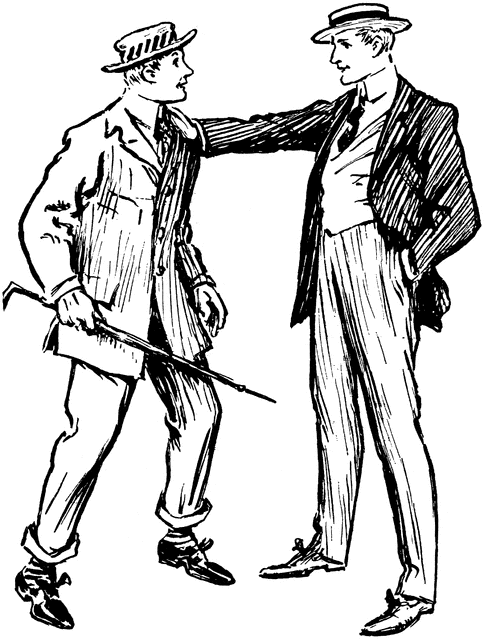This is an encore of an article Michael Chusid wrote more than 20 years ago. While the internet has become more robust than could be seen then, trade shows still remain an important part of the marketing mix.
Does it make sense to cut our exhibiting budget to finance Internet development? If we decide to go to shows, what should we do to get the most from our exhibit?- N. W., marketing manager
High-tech marketing, such as the Internet and other multimedia tools, will only increase the importance of trade shows in building product marketing. As online sales and customer support increase, personal contact between salespeople and customers will decrease. Trade shows let you maintain that personal contact.
This is the dichotomy of high-tech/high-touch marketing predicted 15 [now 35] years ago by John Naisbitt in his book
Megatrends: Ten New Directions Transforming Our Lives.
"The more technology we introduce into society, the more people will aggregate, will want to be with other people," Naisbitt wrote, "We will eventually do some shopping by computer, but only for staple items of which we have a very clear sense and experience. It will be no substitute for the serendipity and high touch of shopping for what we want to be surprised about."
Several building product marketing executives have recently told me that more of their customers are bypassing sales reps and dealing direct with the factory, entering orders online, exchanging CAD drawings by e-mail, and teleconferencing. These marketers are spending money to build Web sites, but they continue to allocate funds for trade show booths to maintain a face-to-face presence with customers.
Industry shows enable an exhibitor to build brand awareness, identify prospects, and shape consumer attitudes. The opportunity for customers to see and handle your products and shake hands with your salespeople makes trade shows a powerful marketing vehicle.
If marketers aren't convinced of the continuing value of face-time, customers are. An architectural specifier I know keeps a list all year of' the products he wants to investigate and the contacts he wants to make when he gets to the Construction Specifications Institute show. His sense of purpose is not unique. Even those who attend just to walk around and see what's new go anticipating serendipity.
To increase your odds of benefiting from that serendipity, you must attract attention. At a recent show, I watched a leggy female model invite attendees to take turns on a putting green in a booth. Although she attracted a crowd by bending over to retrieve golf balls, few attendees inspected the power tools in the booth.
Other efforts to involve customers are more successful. Consider, for example, how Davis Colors used a trade show to launch its Mix-Ready packaging for concrete additives a few years ago. The new package could be tossed into a concrete mixer without opening, weighing, or pouring the dusty powders, a significant advantage for ready-mix producers.
To get the point across, Davis decorated its booth like a basketball court, but with a graphic of the back of a concrete truck instead of a basket. The salespeople wore striped referee shirts and had whistles hanging from lanyards around their necks. They held up basketball-sized Mix-Ready bags and offered attendees chances to "score with Mix-Ready" by tossing bags into the truck.
Show goers greeted the invitation with humor and relief that it wasn't another booth crammed full of product information. It didn't need to be; just tossing the bags into the mixer was enough to create an indelible impression and communicate the benefits of the new admixture system.
The booth also facilitated personal interaction between buyers and sellers. From the free-throw line, the "ref" would hand off the customer to a salesperson who could discuss product benefits one on one.
Tactile tease
Cresset Chemical Co. also uses a high-touch approach at trade shows. Cresset places placards urging visitors to "Feel me" on concrete samples so attendees can understand firsthand the impact of the company's form release compounds on concrete surfaces. Cresset's hooked-up spray equipment lets customers develop a visceral feel for operating the products. While other trade show booths are as passive as a department store window, Cresset's is more like a science museum's hands-on exhibits.
Cresset also does an especially good job of interacting with prospects in the booth. In addition to collecting names and addresses, Cresset's booth staff conduct quick interviews. They use a customized questionnaire to record prospects' current brands, product interests, buying authority, and purchase plans, and decide on the spot what follow-up actions are best. By collecting this information, the staff can make best use of their time with each prospect at the show, and can build a prospect database for later use. The interview takes a few minutes, but I suspect it makes attendees feel they have been properly attended to.
Bring the computer to the show
The high-touch marketing environment of a trade show is also a good place to showcase your high-tech marketing. Though products still deserve center stage, a computer in the booth lets you demonstrate your Web site and explain its cyber benefits. This is especially important if you hope to make the Internet a central component of your customer service program. The more you spend on your Web site, the more you might want to spend on showcasing it at trade shows.
Have a question you'd like us to answer?
Send an email to
michaelchusid@chusid.com
By Michael Chusid, Originally published in Construction Marketing Today, ©1997






























